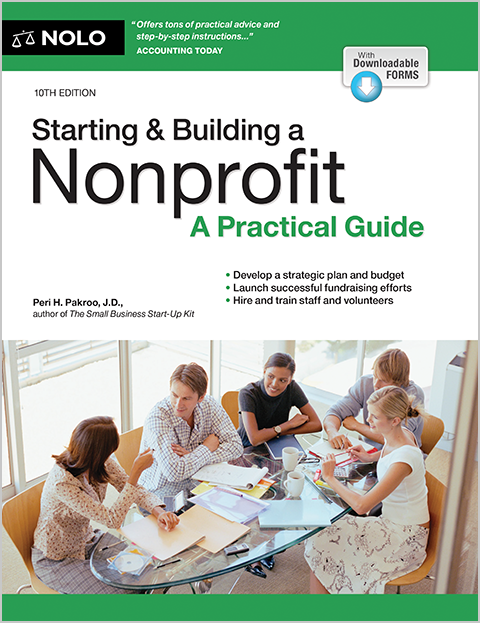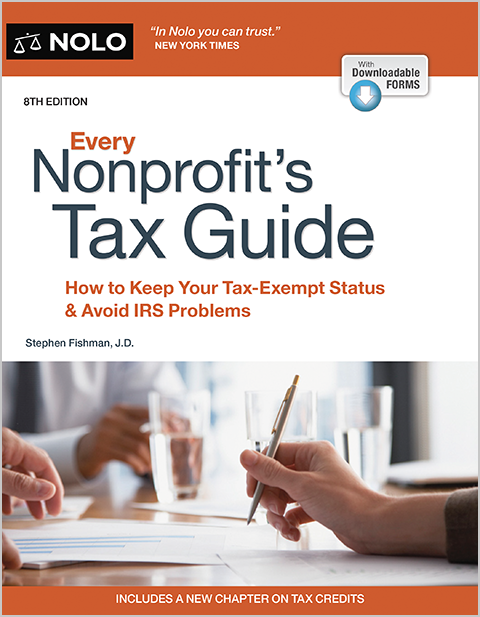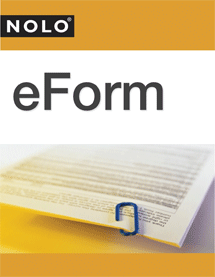Here are the steps you need to take to form a 501(c)(3) nonprofit corporation in Ohio.
Most nonprofits are 501(c)(3) corporations, which means they are formed for religious, charitable, scientific, literary, or educational purposes and are eligible for federal and state tax exemptions. To create a 501(c)(3) tax-exempt organization, first you need to form an Ohio corporation, then you must apply for tax-exempt status from the IRS and the State of Ohio.
While the requirements for nonprofits can vary, you can generally follow the steps below to form your Ohio nonprofit. If you'd like a helping hand with the registration process, you can use our online nonprofit formation service to set up your nonprofit.
- 1. Choose a Name for Your Ohio Nonprofit Corporation
- 2. Appoint the Initial Directors for Your Corporation
- 3. File Articles of Incorporation for Your Ohio Nonprofit
- 4. Prepare Bylaws (Regulations) for Your Ohio Nonprofit Corporation
- 5. Hold an Organizational Meeting
- 6. Apply for an EIN From the IRS
- 7. Obtain the Necessary Business Licenses
- 8. Get Your Federal and State Tax Exemptions
1. Choose a Name for Your Ohio Nonprofit Corporation
When starting your Ohio nonprofit, you must choose a business name. Ohio, like most other states, has rules and restrictions for nonprofit names.
Nonprofit name must be distinguishable. The name of your nonprofit corporation must be distinguishable from the names or trade names of other businesses already reserved or registered with the Ohio Secretary of State (SOS). You can check which names are available for your nonprofit to use by searching the SOS's business name database. (Ohio Rev. Code § 1702.05 (2024).)
Name reservation. You can reserve an available corporate name for 180 days by filing a Name Reservation with the SOS. You can mail the name reservation form to the SOS or submit the filing online via Ohio Business Central, the SOS's online business filing system. As of 2024, the fee to reserve a business name is $39. (Ohio Rev. Code § 1702.05 (2024).)
Using a trade name or fictitious name. When doing business out in the real world, you can use a name for your nonprofit other than its legal name (as filed with its articles of incorporation). In Ohio, this alternate name is called a "trade name" or "fictitious name." In other states, this name can be called a "DBA" (short for doing business as) or "assumed name." If you want to use a DBA for your nonprofit, you must register it as a trade name or report it as a fictitious name. Essentially, a "fictitious name" is a DBA that can't be registered as a trade name (usually because it's not distinguishable). Use Form 534A to register your trade name or fictitious name. You can also submit this filing through Ohio Business Central. (Ohio Rev. Code § 1329.01 (2024).)
2. Appoint the Initial Directors for Your Corporation
Your nonprofit will need a board of directors to exercise corporate power and manage its affairs. In Ohio, you must have at least three directors on your board. However, if your nonprofit has less than three members, then the number of directors should be equal to or greater than your number of members. In any case, aim for an odd number of directors to avoid any voting ties. (Ohio Rev. Code § 1702.27 (2024).)
Your nonprofit corporation's articles or bylaws should outline specific requirements and restrictions for directors, including:
- the number of directors (the number will be set out three if not specified)
- the rights, duties, and powers of directors
- the term of directors
- the qualifications for directors
- the election, designation, and appointment of directors, and
- the meetings of the board of directors.
Make sure your nonprofit's formation documents follow Ohio's laws for nonprofit corporations.
3. File Articles of Incorporation for Your Ohio Nonprofit
To form a nonprofit in Ohio, you must file Articles of Incorporation with the SOS. You must include the following information in your articles of incorporation:
- the name of your nonprofit
- the place in the state where the principal office of the corporation is to be located
- the purpose for which the nonprofit is formed—your purpose statement must comply with IRS requirements (see below), and
- the name, address, and signature of the nonprofit's statutory agent (called a "registered agent" in other states).
(Ohio Rev. Code § 1702.04 (2024).)
An incorporator must sign the articles.
Include IRS-Specific Nonprofit Language in Your Articles of Incorporation
In addition to the above requirements, you'll need to include specific language in your articles to receive 501(c)(3) tax-exempt status from the IRS. This 501(c)(3) language includes the following:
- a statement of purpose that meets IRS requirements
- statements that your nonprofit will not engage in activities unrelated to its exempt purposes or in prohibited political or legislative activity, and
- a dissolution clause dedicating the corporation's assets to another 501(c)(3) organization or to the government upon your nonprofit's dissolution.
The SOS provides an articles of incorporation form with room to include this IRS language (see below).
For guidance on 501(c)(3) language, check out the IRS's publication on the suggested language for corporations to use in their articles of incorporation. You can also find sample language to use approved by the IRS in the Instructions for IRS Form 1023-EZ, (see Part II).
How to File Your Articles of Incorporation
You can file your articles online through Ohio Business Central. Alternatively, the SOS has a fillable articles of incorporation form on its website that you can complete and file by mail. As of 2024, the filing fee for nonprofit articles of incorporation is $99.
The articles form available from the state has the minimal information necessary to create a nonprofit in Ohio. It doesn't include language required by the IRS to obtain 501(c)(3) tax-exempt status. You'll need to add these clauses to your articles yourself. You can do so in an attachment you add to the online articles or the fillable pdf form on the SOS's website.
For more information on IRS requirements for tax exemption, including sample language, consult How to Form a Nonprofit Corporation, by Anthony Mancuso (Nolo). In addition, this book has line-by-line instructions on how to complete Form 1023, how to create your nonprofit's bylaws, and more (discussed later).
4. Prepare Bylaws (Regulations) for Your Ohio Nonprofit Corporation
After filing your articles, you should draft your nonprofit's bylaws. In Ohio, these bylaws are called "regulations." Your nonprofit's incorporators should adopt the initial bylaws for your nonprofit. This organizational document provides the blueprint for how your nonprofit will be managed.
Your bylaws contain the rules and procedures your corporation will follow for:
- how to call and conduct meetings
- the admission, withdrawal, termination, and qualifications of members
- member dues and fees
- voting rights
- how representatives or delegates are elected and their rights, authority, and privileges
- the number, classification, term, and removal of directors
- how executives and committees are elected and their rights, authority, and privileges
- the exercise of the authority of the corporation, and its directors, officers, and members, and
- how to adopt, amend, and repeal the bylaws (regulations).
(Ohio Rev. Code § 1702.11 (2024).)
You don't need to file your regulations with the state—this document is your internal operating manual. Keep a record of your nonprofit's bylaws (regulations) with your corporate records book.
5. Hold an Organizational Meeting
Once your nonprofit prepares its bylaws (regulations), the incorporators can hold a meeting to adopt the nonprofit's bylaws and elect any directors and members in addition to those named in the articles. If the incorporators don't adopt regulations within 90 days of incorporation, then the regulations can be adopted by the voting members. (Ohio Rev. Code § 1702.10 (2024).)
In addition to a meeting by the incorporators, the board of directors should meet to complete the organization of your nonprofit. The board should take such actions as:
- approving the bylaws (regulations), if they haven't been approved already
- appointing officers
- setting an accounting period and tax year, and
- approving initial corporation transactions, such as opening a corporate bank account.
After these meetings are held, you should create meeting minutes that accurately record the actions taken by the board (and incorporators and members). Set up a corporate records binder to hold the corporation's articles, bylaws, consent forms, minutes, and other important documents.
6. Apply for an EIN From the IRS
Your nonprofit corporation needs a federal employer identification number (EIN). You'll use this number to complete You'll need this number to complete your application for federal tax exemption (discussed later).
To get your EIN, complete an online EIN application through the IRS website. There's no filing fee to apply for an EIN.
7. Obtain the Necessary Business Licenses
Depending on the type of activities your nonprofit intends to carry on and where it's located, your nonprofit might need to obtain local and state business licenses or permits. You can look to the start a business page on the Ohio website to access regulatory checklists for various types of businesses.
For local licenses, contact your city or county for guidance about local licenses and permits. Some cities require all or certain kinds of businesses to obtain a license before operating within city limits.
Read how to get a small business license in Ohio for more details about licensing and permitting requirements in the state.
8. Get Your Federal and State Tax Exemptions
Once you've created your nonprofit corporation in Ohio, you can obtain your federal and state tax exemptions. Here are the steps you must take to obtain your tax-exempt status.
File Your Form 1023 Federal Tax Exemption Application
To get your federal tax-exempt status from the IRS, you must complete and file IRS IRS Form 1023, Application for Recognition of Exemption Under Section 501(c)(3) of the Internal Revenue Code. This long and detailed form asks for a lot of information about your organization, including its history, finances, organizational structure, governance policies, operations, activities, and more.
Smaller nonprofits might be eligible to file Form 1023-EZ, Streamlined Application for Recognition of Exemption under Section 501(c)(3) of the Internal Revenue Code. This application is a much simpler, shorter form that's filed online. Only smaller nonprofits with projected annual gross receipts of less than $50,000 and total assets of less than $250,000 are eligible to use the streamlined 1023-EZ application.
You can visit the IRS website for more information on the Form 1023 and Form 1023-EZ filing requirements.
Ohio State Tax Exemptions
Nonprofits who receive a 501(c)(3) determination letter from the IRS are generally automatically exempt from Ohio's commercial activity tax. This state tax effectively doesn't apply to nonprofits.
Your nonprofit can claim an exemption from state sales taxes by filing a Sales and Use Tax Blanket Exemption Certificate (Form STEC B) with the Ohio Department of Taxation (DOT).
For more information about exemptions from state taxes, check with the DOT's nonprofit tax issues page.
Other State Reporting and Registration Requirements
Ohio requires charities operating in Ohio to register with the Attorney General's Office. You must use the Attorney General's online system to register your nonprofit and file your annual reports. You only need to register your nonprofit once; The registration doesn't require renewal.
See the Attorney General's charity registration page for more details and links to the forms your nonprofit needs.
If you plan to operate in other states, you'll need to look into the fundraising registration and reporting obligations in those states.
For more information about fundraising registration requirements, check out the Nonprofit Fundraising Registration Digital Guide, by Ronald J. Barrett and Stephen Fishman (Nolo).
For additional helpful guidance, see Your Guide to Starting a Nonprofit in Ohio, available on the SOS's website. This guide takes you through all the listed steps above and provides information about services for Ohio businesses and nonprofits. You can also follow along with your nonprofit's formation and regulatory requirements using the provided quick-start for your business checklist.
You can use these government resources to help you create and manage your nonprofit yourself. If you have legal questions throughout the setup process or particularly complicated legal issues, consider working with a nonprofit lawyer. An experienced attorney can make sure your nonprofit is meeting all its initial and ongoing legal and tax obligations.
If you'd like more help with common questions and issues facing nonprofits, read through our sections on starting a nonprofit corporation and managing a nonprofit.
Ready to start your Nonprofit Corporation?
- 1. Choose a Name for Your Ohio Nonprofit Corporation
- 2. Appoint the Initial Directors for Your Corporation
- 3. File Articles of Incorporation for Your Ohio Nonprofit
- 4. Prepare Bylaws (Regulations) for Your Ohio Nonprofit Corporation
- 5. Hold an Organizational Meeting
- 6. Apply for an EIN From the IRS
- 7. Obtain the Necessary Business Licenses
- 8. Get Your Federal and State Tax Exemptions



